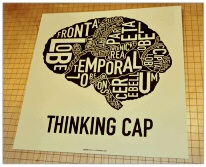Quick links from the past week in mind and brain news:
<img align="left" src="http://mindhacks-legacy.s3.amazonaws.com/2005/01/spike.jpg" width="102" height="120"
There’s an excellent analysis of the Blue Brain / IBM rumpus about ‘cat brain’ simulations and PR hype over at IEEE Spectrums.
Wired covers doubts about the ‘awake during 23 years in diagnosed coma’ case. NewSci has an subsequent interview with treating neurologist Steven Laureys, who adds little, but to be fair, he’s in a difficult position as he is bound by patient confidentiality.
There’s an obituary of influential anthropologist and linguist Dell Hymes in the Washington Post “who helped pioneer the study of how people use language in their everyday lives”.
Not Exactly Rocket Science covers an surprising study that finds that liberal American students tend to think that lighter photos of Barack Obama are more typical of him, while conservatives think he’s best represented by darker photos. Lighter skin judgements predicts voting in everyone.
NPR has an interesting piece on studies showing that the idea of ‘multi-tasking‘ is likely a myth – in fact, we’re probably just fast switching between tasks.
Mugged by a one eyed-man? BPS Research Digest covers research on how to make police line-ups fairer for suspects who have an unusual distinguishing feature.
All in the Mind has an interesting piece on piece on the psychology of engaging people with climate change.
Science writer David Dobbs discusses his recent piece on recasting risk genes as sensitivity genes on the Brain Lehrer Radio Show. You can hear the piece on Neuron Culture.
BBC News reports on a new study that has found a crucial gene involved in one of the deadliest forms of brain tumour.
There’s an excellent piece on ‘the mighty power of the nocebo effect‘ on Bad Science following recent goverment discussion on the evidence for homeopathy in the UK
Time magazine slightly misses the point by asking ‘Female Sexual Dysfunction: Myth or Malady?’. The key issue is not whether it’s a difficulty, but whether it’s a medical condition. The latter is being hyped now there’s a not very effective medication in the pipeline ready to be marketed.
On a similar note, there’s a good analysis of the new ‘female sex drive pill’ trial data that’s been released in summary form over at Neuroskeptic.
The Toronto Globe and Mail has an excellent piece about the growing evidence for bloodflow difficulties being involved in multiple sclerosis.
Neuronarrative collects a series of video lectures on the neuroscience of emotion.
Genetic differences in responsiveness to oxytocin are linked face reading ability and success in inferring emotions, according to research covered by The New York Times.
How our skin helps us to perceive speech. No really. Another good write-up from Not Exactly Rocket Science.
Science covers how fMRI evidence has recently been used in sentencing in a US murder case.
Science writer Jonah Lehrer reviews Stanislas Dehaene’s book on the neuroscience of reading over at Barnes and Nobel Review.
The Guardian covers a recent study that involving brain scanning actress Fiona Shaw to help understand how actors take on other characters.
A rather poorly controlled new study on brain structure differences related to ‘internet addiction’ is expertly covered by The Neurocritic.
Addiction Inbox cover the inconvenient truth from the latest survey that the Dutch smoke less cannabis than the majority of other European countries.
Can you be blamed for sleepwalking crimes? asks New Scientist.
Somatosphere has a motherlode of podcasts from a recent neuroethics conference.
 The Providentia psychology blog has an excellent post about old-time champion boxer ‘The Michigan Wildcat’ Wolgast who fought on despite clear neurological damage and eventually suffered boxer’s dementia. He could apparently be found shadow boxing invisible opponents in the sanatorium.
The Providentia psychology blog has an excellent post about old-time champion boxer ‘The Michigan Wildcat’ Wolgast who fought on despite clear neurological damage and eventually suffered boxer’s dementia. He could apparently be found shadow boxing invisible opponents in the sanatorium. The New York Times has an excellent
The New York Times has an excellent  Mind Hacks is five years old today. The
Mind Hacks is five years old today. The  PsyBlog
PsyBlog  New Scientist has a
New Scientist has a  The
The  I’ve just caught a short
I’ve just caught a short  I’ve just found this interesting 1927
I’ve just found this interesting 1927  Don’t miss a special edition of the Nature NeuroPod
Don’t miss a special edition of the Nature NeuroPod  Online poster shop Ork Posters! have this fantastic brain
Online poster shop Ork Posters! have this fantastic brain 
 ABC Radio National’s Artworks programme
ABC Radio National’s Artworks programme  The Chicago Tribune has just published two
The Chicago Tribune has just published two  BBC Radio 4 has an excellent
BBC Radio 4 has an excellent